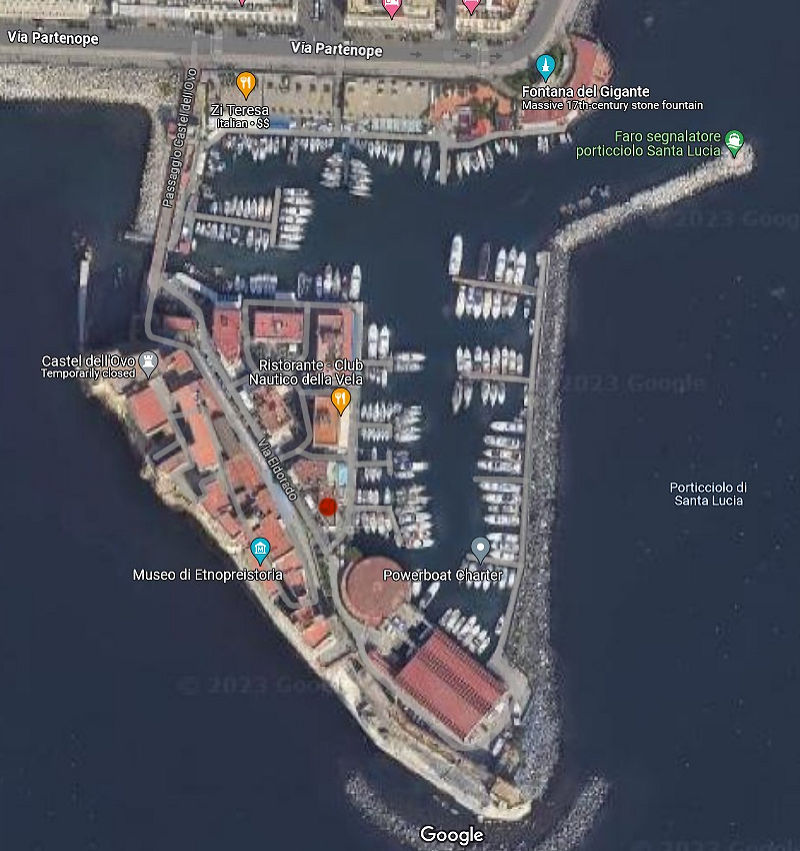You may not find this terribly rewarding unless you're included here, so this is a good time for casual and random browsers to turn back before they get too caught up in the sweep and majesty of the proceedings and can't let go.
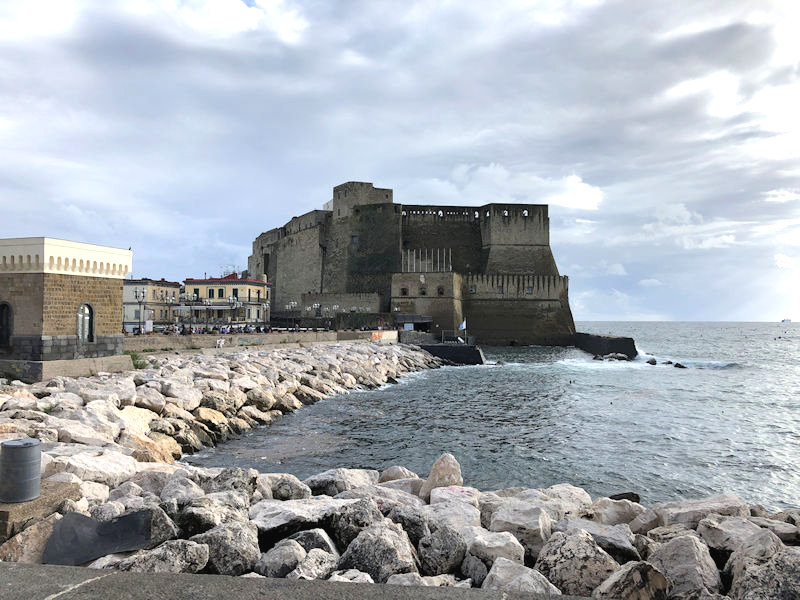
An hour's trajet on the Italo high-speed train from Roma Termini to Napoli Centrale and a short taxi ride across town, we're here at last -- the very old island of Megaride, first colonized by Greek colonists expanding up from Cumae in the 6th century BC, it was the site of a 1st century BC luxury villa and later fortified in the mid-5th century. Along the way, a 120m causeway was built joining the island to the shore and headland just above it.
The Normans built the first serious castle here in the 1140s, the Castel dell'Ovo ('Castle of the Egg'),
and it's still here, housing administrative offices and usually some tourist access, though now it's still undergoing restorations. The island was for a long time the centre of a fishing community, the Borgo Marinaro, but is now a centre for a pleasure-boats marina and brimming over with restaurants.
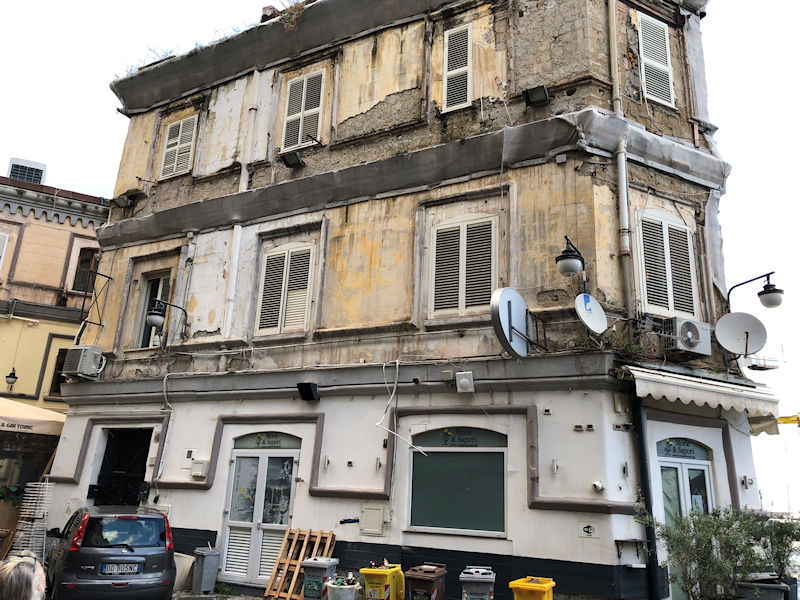
There is at least one small residential building, and it's here at the point of the habitable part on Via Eldorado, by the Castel dell'Ovo alongside and the facilities of the Powerboat Italy marina. There are two flats and one street-level restaurant, being renovated when this photo was taken last year, but presently being tidied up under new management.

That's the new restaurant, not yet open; our flat is just above it.
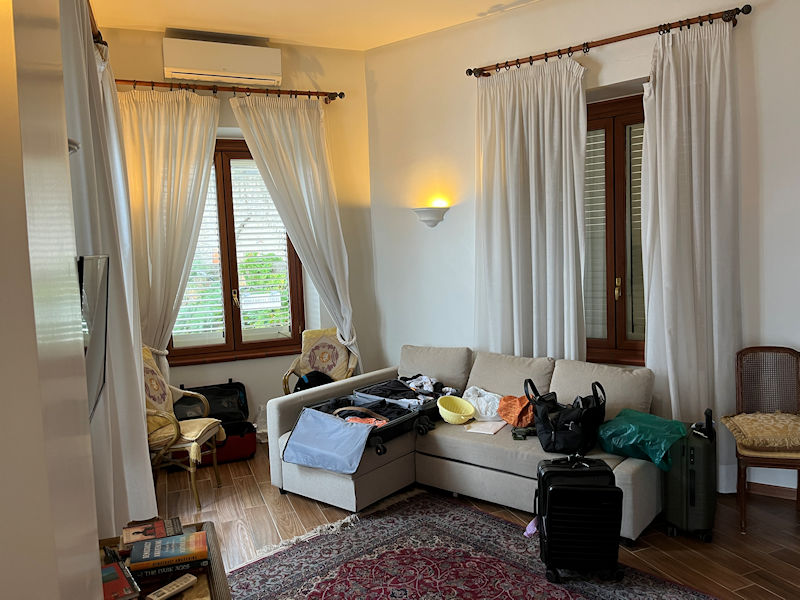
A comfy salon-type nook, views out three sides, and a TV which we nearly never turn on.

A 'dining area' amidships and a hang-on-for-dear-life stairway to the bedroom and loo.
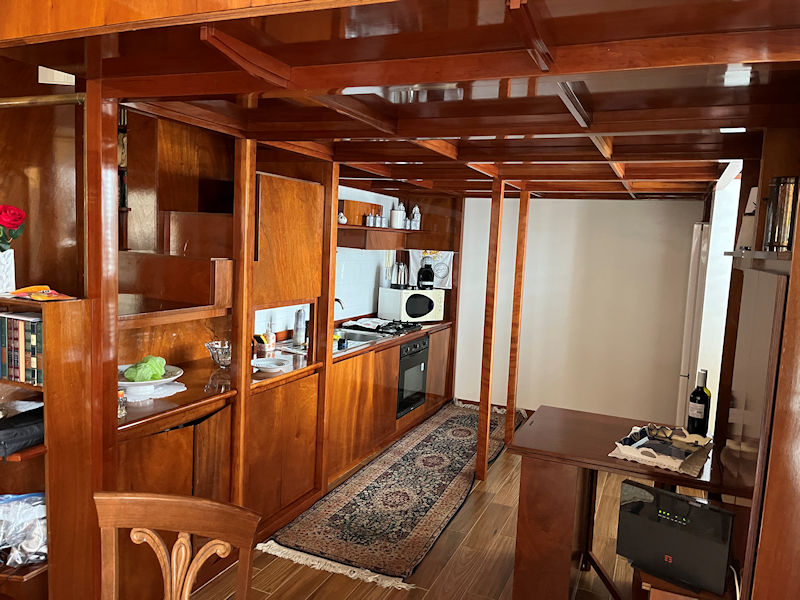
The kitchen with appliances and some supports for holding the bedroom up where it belongs
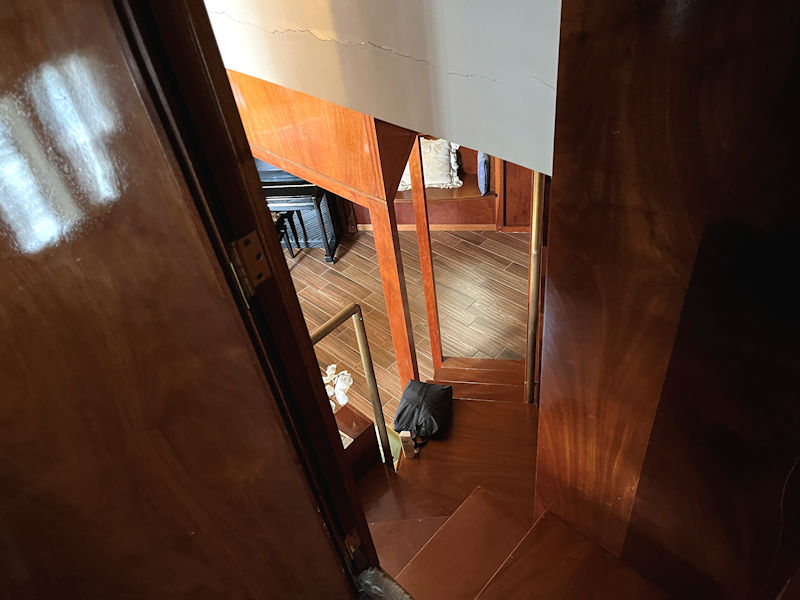
The stairway, pretty much more suitable for younger people
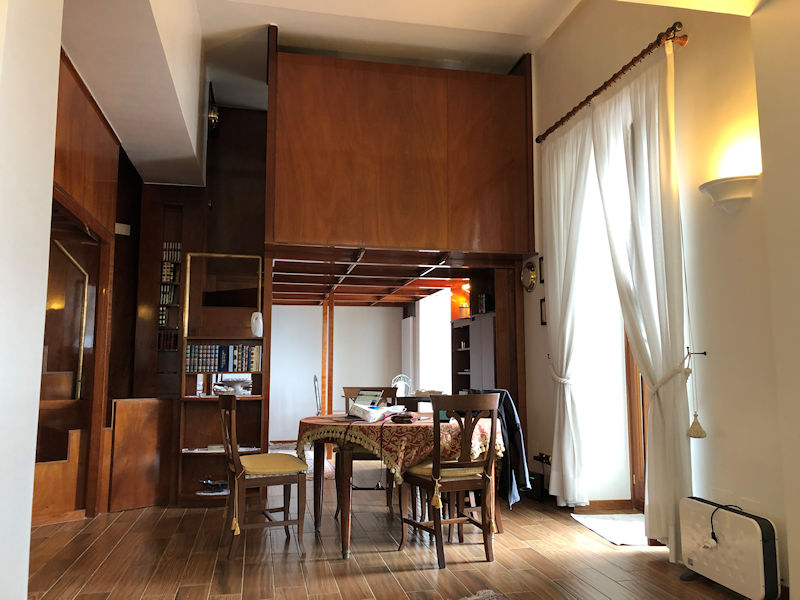
We like this flat (except for the stairway) very much, which is why we've come back this year.
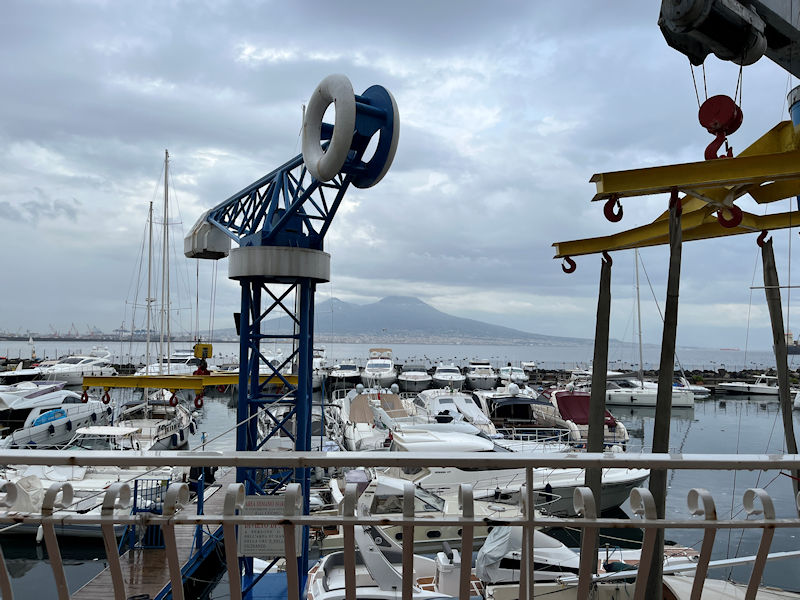
The view from the balcony over the marina (the 'Porticciolo di Santa Lucia', named for this Santa Lucia district of the city), the Bay and Gulf of Naples, and . . .

. . . Mt Vesuvius looming.
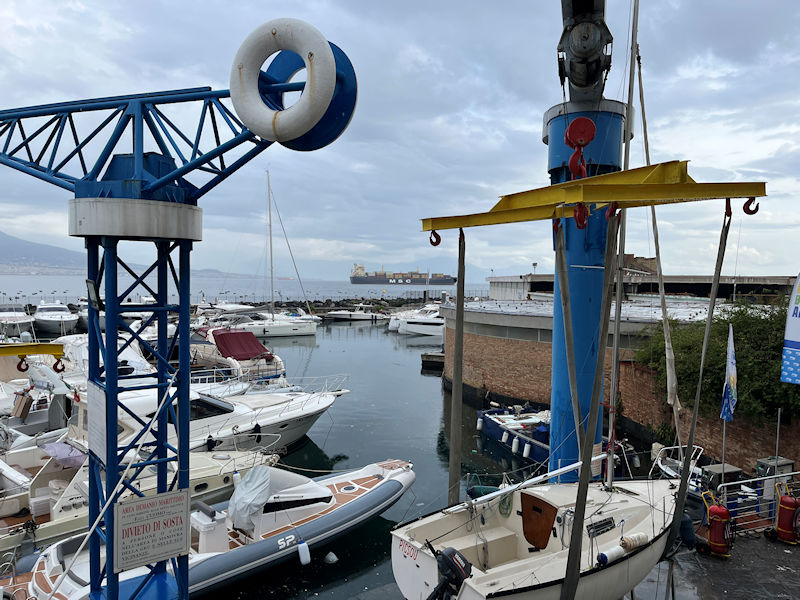
A container ship parked and awaiting its turn in the offloading port (there are often several poised out there).
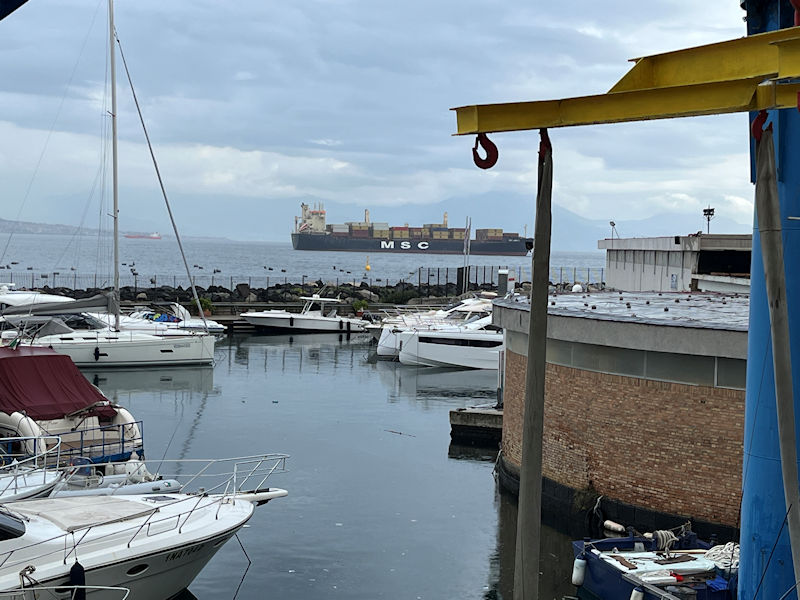
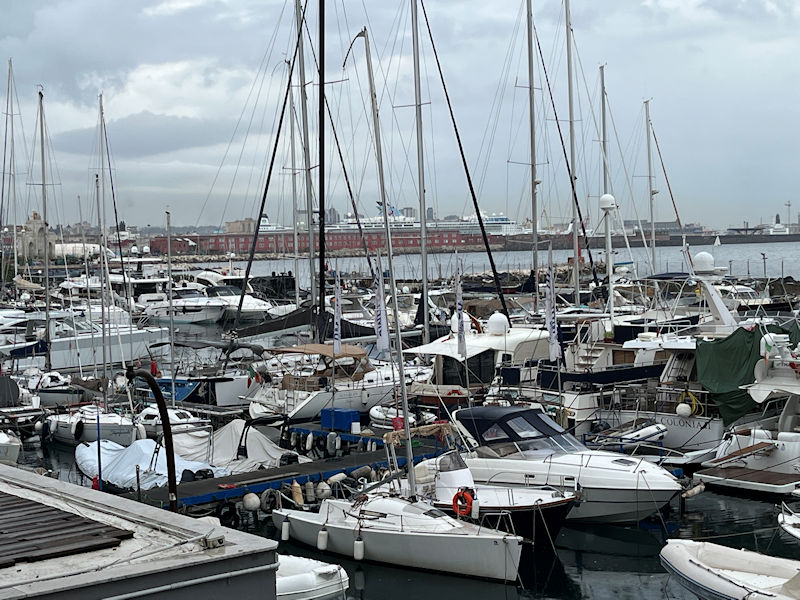
The industrial shipping offloads on the far side of the bay, but in the middle we've got the daily traffic of huge cruise ships, each disgorging two thousand or more passengers onto the crowded streets for a daily look-see and then heading back out for the next tourist attraction.
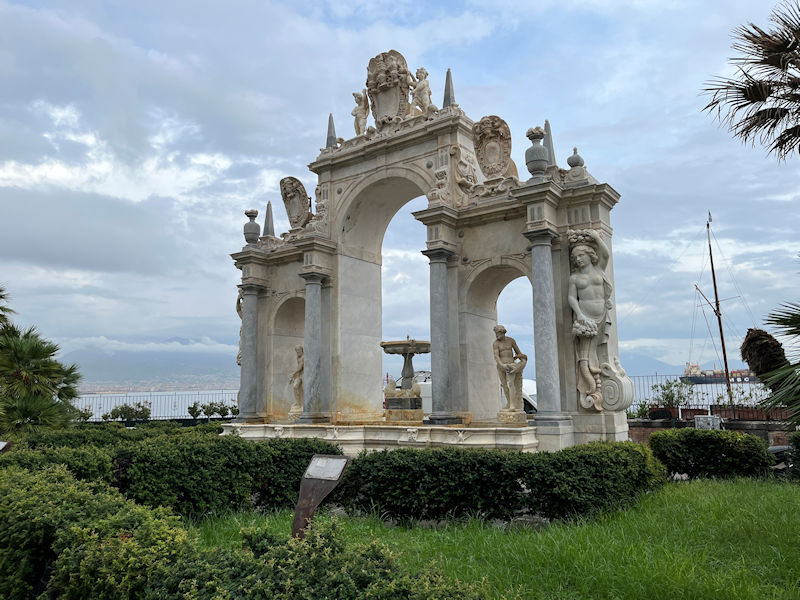
We're taking a first-afternoon-in-town walk round the St Lucia seaside neighborhood, mainly to recall where our favorite shops for comestibles are. This is the Fontana del Gigante, made in the early 1600s by Gian Lorenzo Bernini's dad Piero and Michelangelo Naccherino and placed by the Royal Palace in what's now called the Piazza del Plebiscito, next to a giant statue fitted with a colossal bust of Jupitor Stator found in Cumae in 1670. The bust is now in the archaeological museum uptown, but the fountain was taken apart and idled from 1815 to 1882, then stuck up here in 1905 for everyone to admire, which they do.
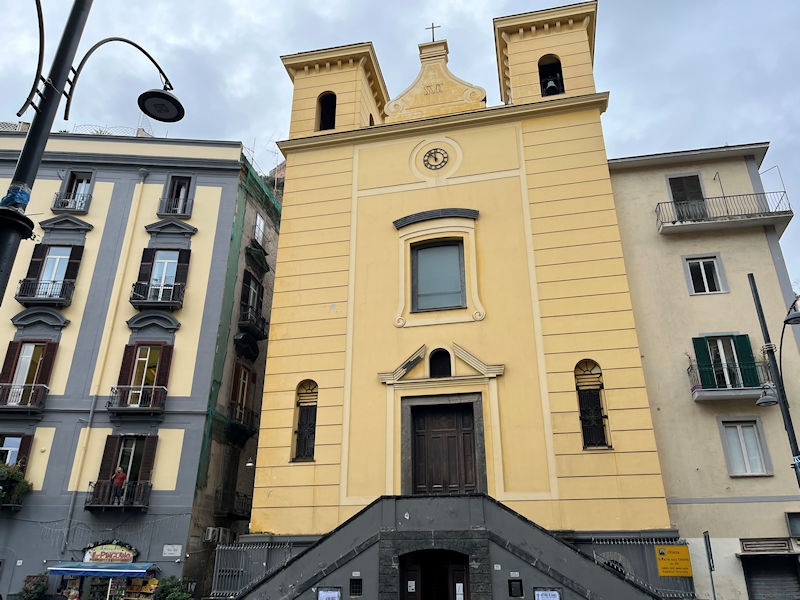
A recent facelift, perhaps, for the Church of Santa Maria della Catena on Via Santa Lucia, which was built in 1576 on what was then the seaside (before the present Partenope waterfront was built out in the early 20th century). It was to participate in the cult of the Madonna of the Chain then popular in Naples and Sicily, rooted in a legend of an event in 1390 in Palermo when three innocent men were condemned to hanging and kept overnight in chains; when they appealed to the Virgin, their chains were broken by a 'miraculous intervention' and they got free. The chains were found in the nearby Sicilian church of Santa Maria del Porto, and its name was changed to this one and the cult took off. Today this church serves only as a rectory for the nearby church of Santa Lucia a Mare.
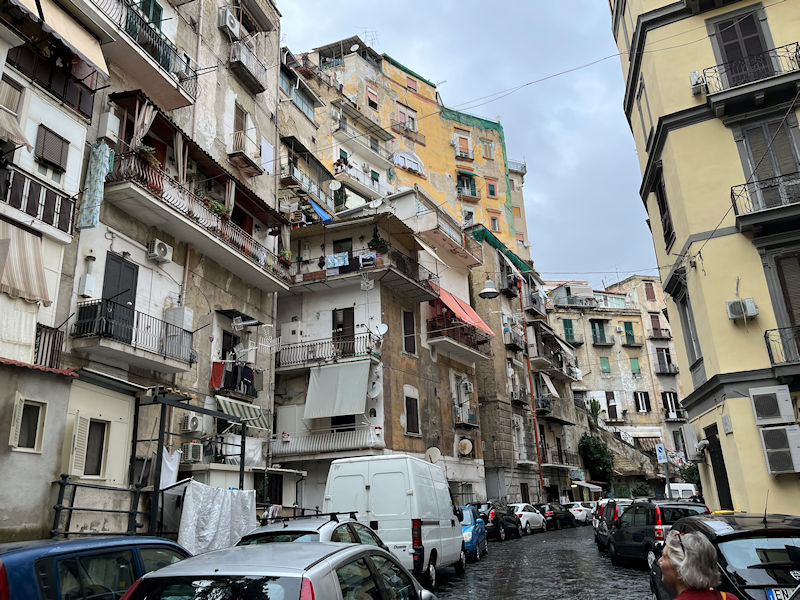
One searches up the Via Serapide behind the Via Santa Lucia thoroughfare, confident that there was a convenient little beer/wine convenience store somewhere here . . .

. . . , though there's not. Just a Vespa rental and a luggage-storage place.
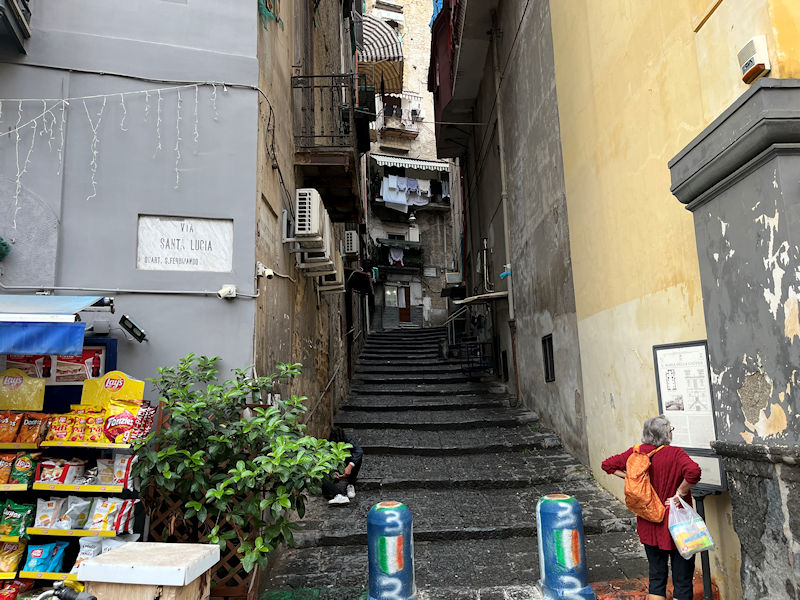
But on the Via Santa Lucia, there's everything we need.
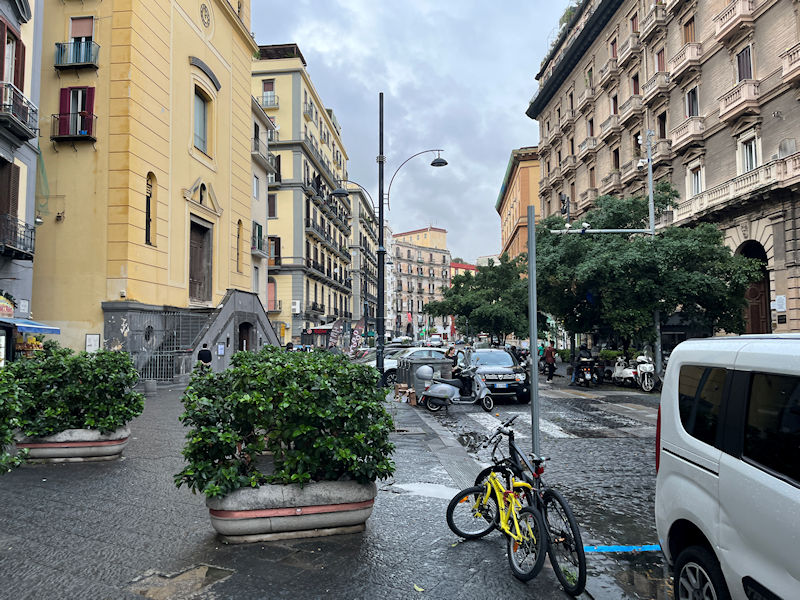
The Via Santa Lucia its own good self -- last year we took dinner mostly out on the island (and mostly at Ciro), but this year we're bent upon trying some of the attractive places along here.
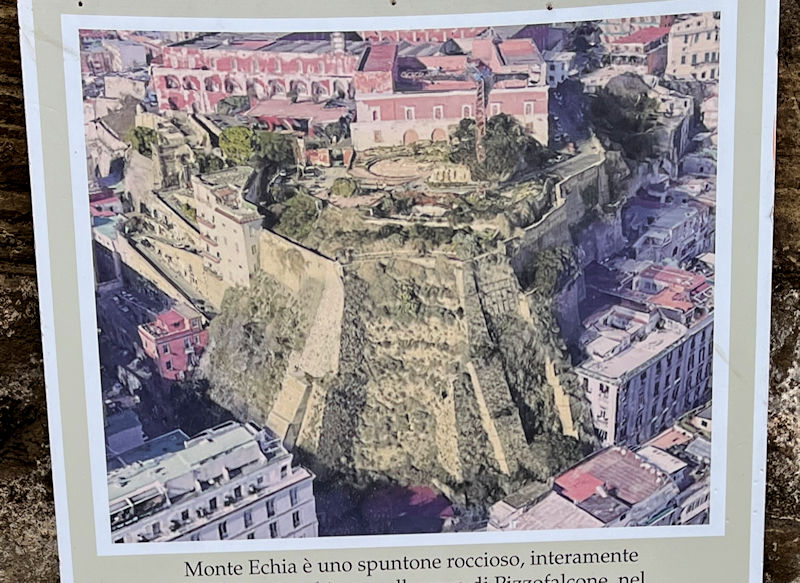
This is a poster about the retaining wall for the front of Monte Echia, a headland extending right to Via Santa Lucia that had very early Greek and Roman habitations on it and came almost right to the shore before the Partenope extensions. The photo's a bit dated, as now, in that central face, there is a sizable tunnel leading back to an elevator, completed after 17 years' work in April 2024, for taking tourists like us up to the little belvedere park for optimum viewing of the neighborhood for one euro (each).
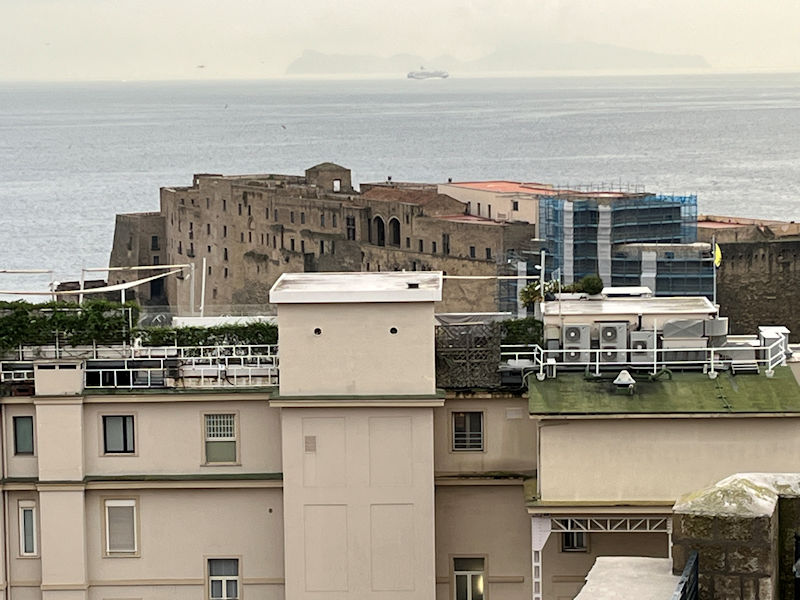
The Castel dell'Ovo asserts itself in the foreground, and Capri is blurringly on the horizon.
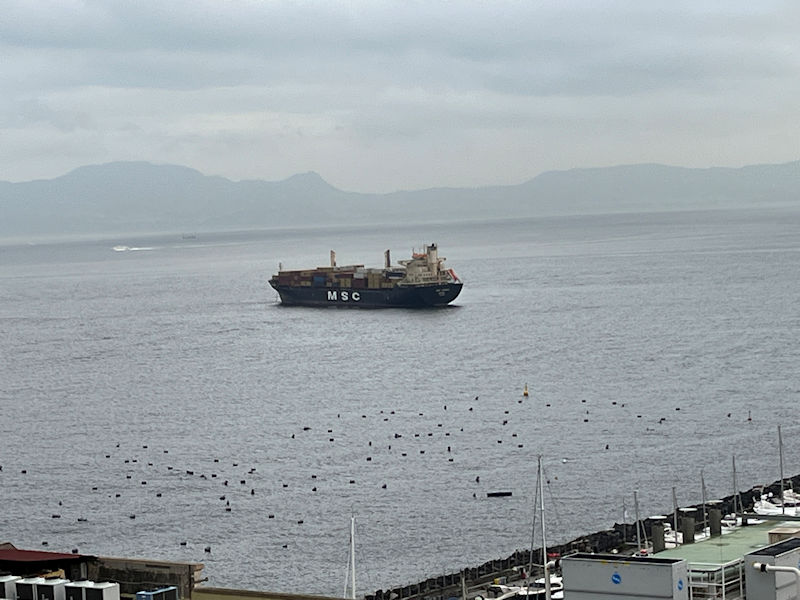
Still waiting round for something to happen
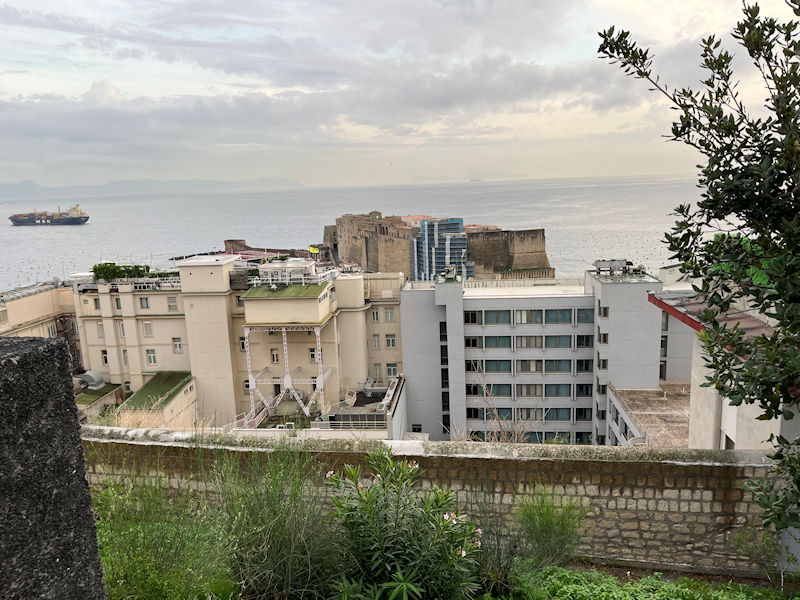
The Castel dell'Ovo and the row of hotels along the Partenope one-way boulevard round the shore of the Santa Lucia district. The Tunnel della Vittoria, completed in 1929, carries automobile traffic in both directions almost directly below our feet.
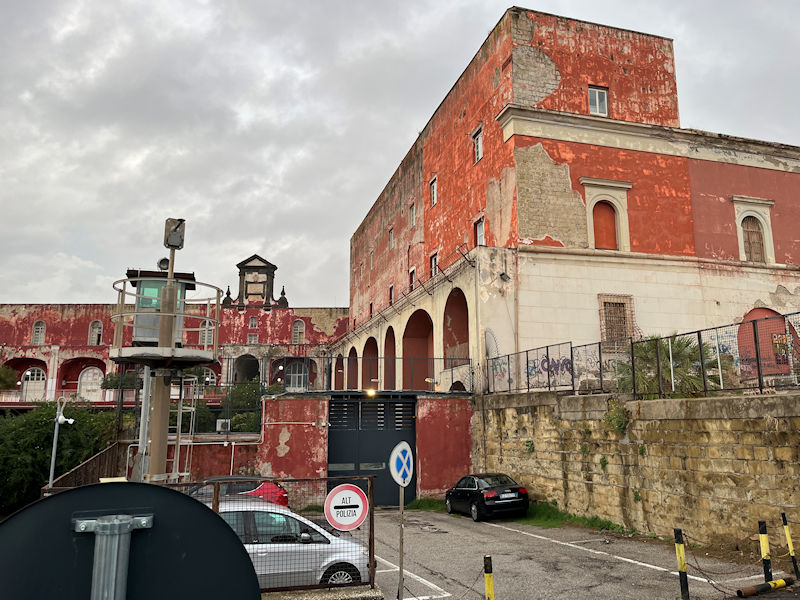
The abandoned Caserma Nino Bixio, Palazzo Pizzofalcone
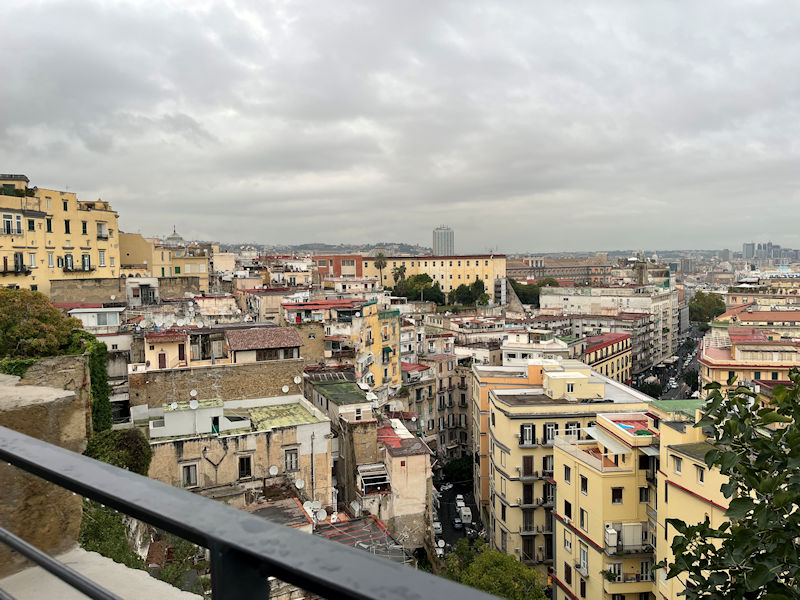
Cityscape
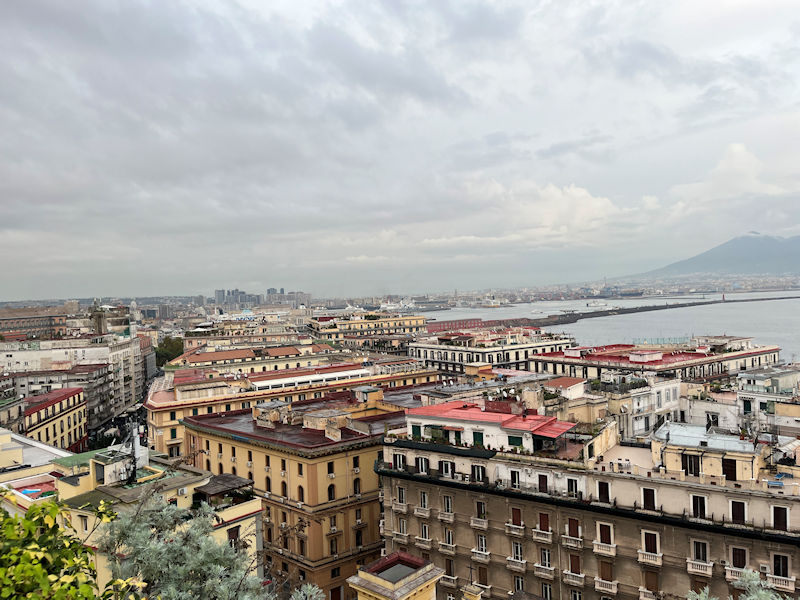
The port area
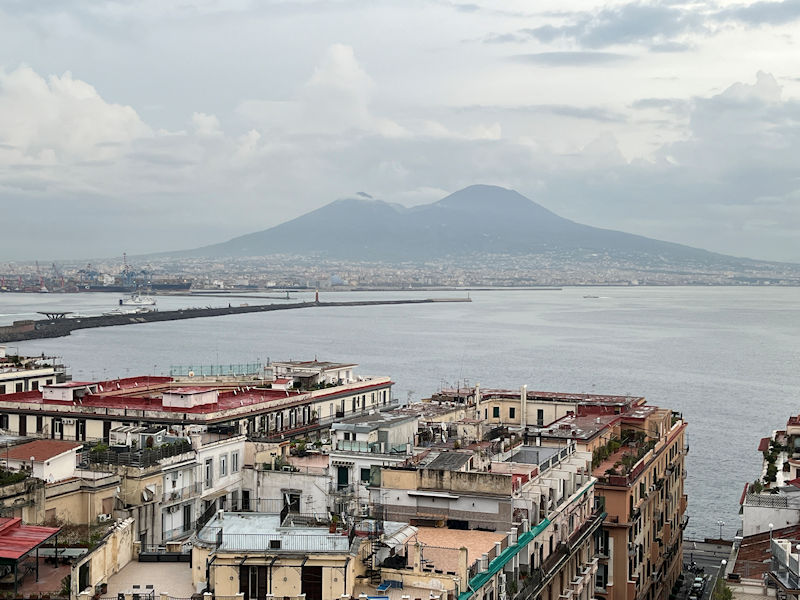
-- Thar she blows! Oh, wait, not yet!

The apartment buildings directly below the belvedere facing Via Chiatamone, Via Santa Lucia on the left, and the roofs of the Royal Continental Hotel and Grand Hotel Vesuvio facing the sea.
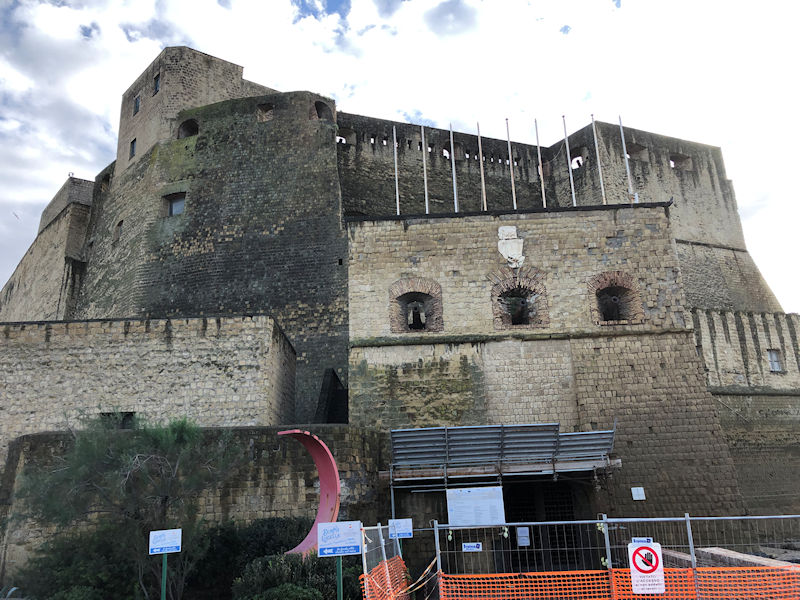
Time for dinner (in the Ristorante Ciro by the castle entrance)
The next day, 23 October 2024
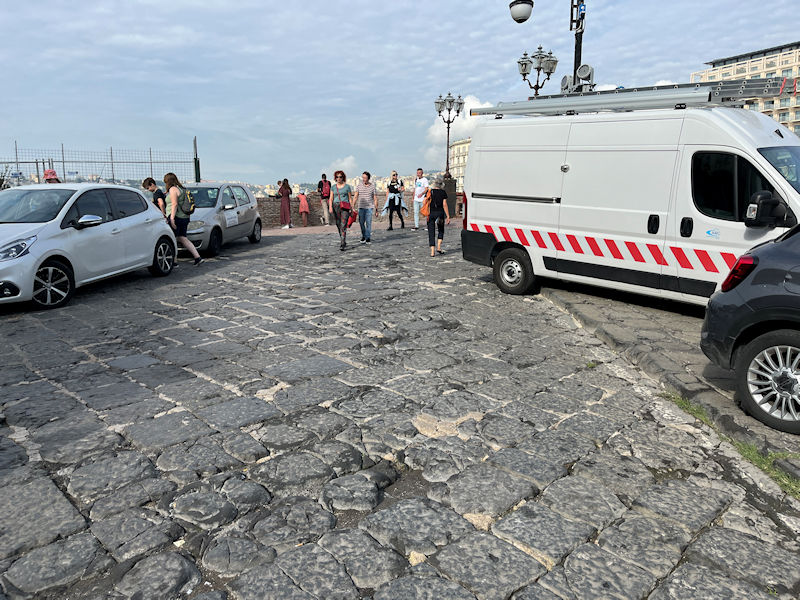
We're headed out to visit the Castel Nuovo -- we stopped in briefly once a few years ago, but this will be our first good look round the insides.

Note that the 'cobblestones' are made up of folded-up lava stones (probably easily procured all the way round Vesuvius).
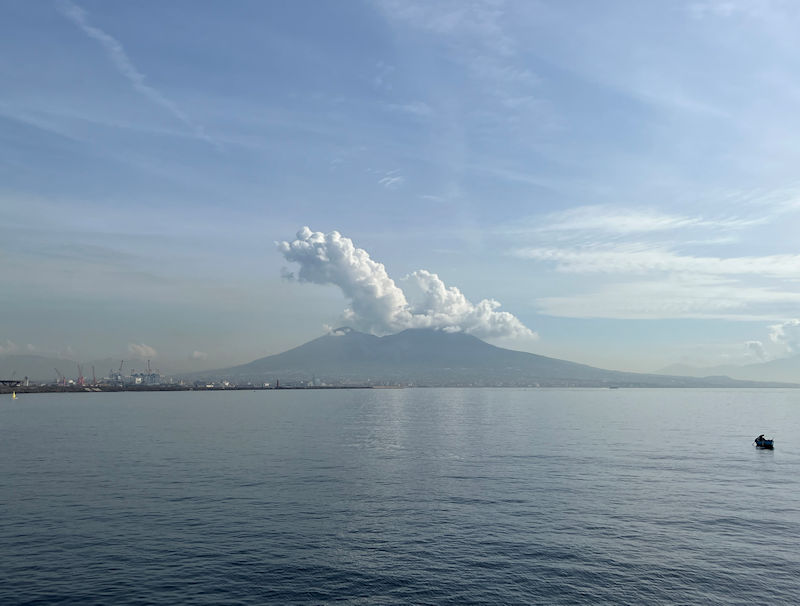
Uh oh. Should we be concerned at all?
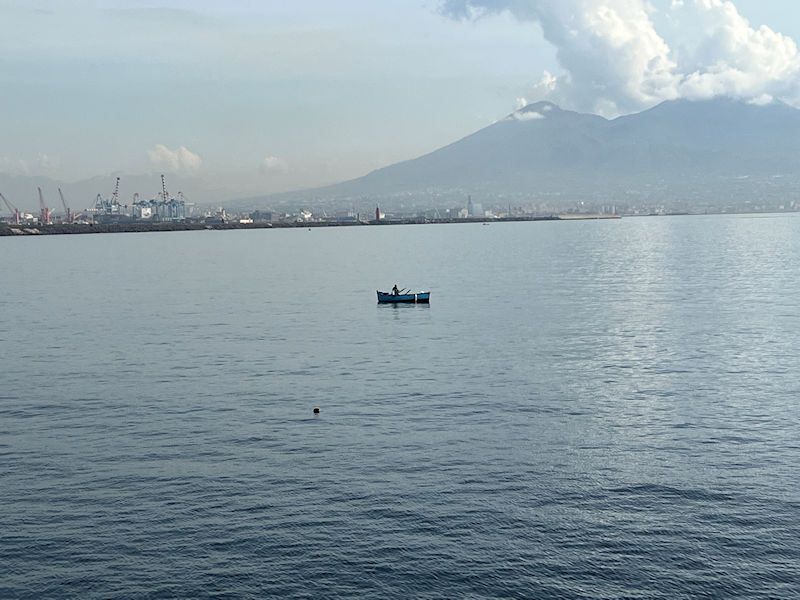
Well, he's not concerned, so . . . oh well.
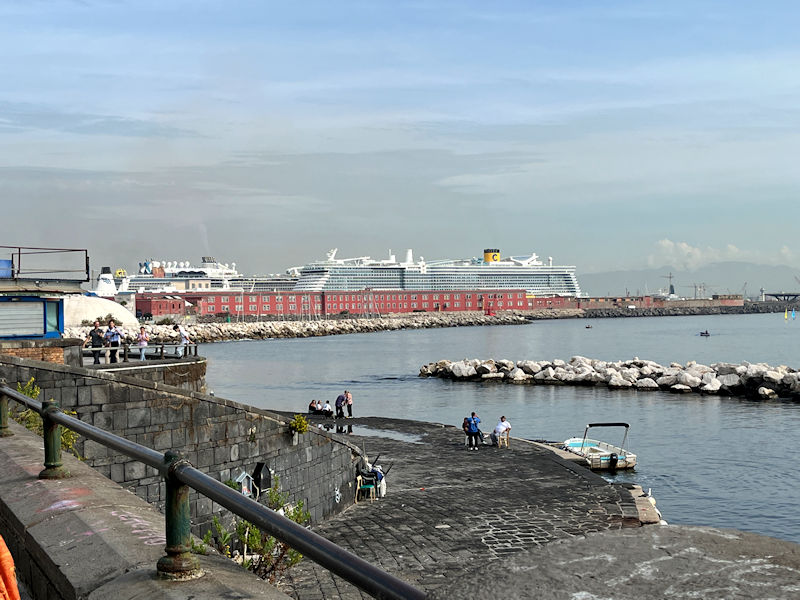
The floating palaces
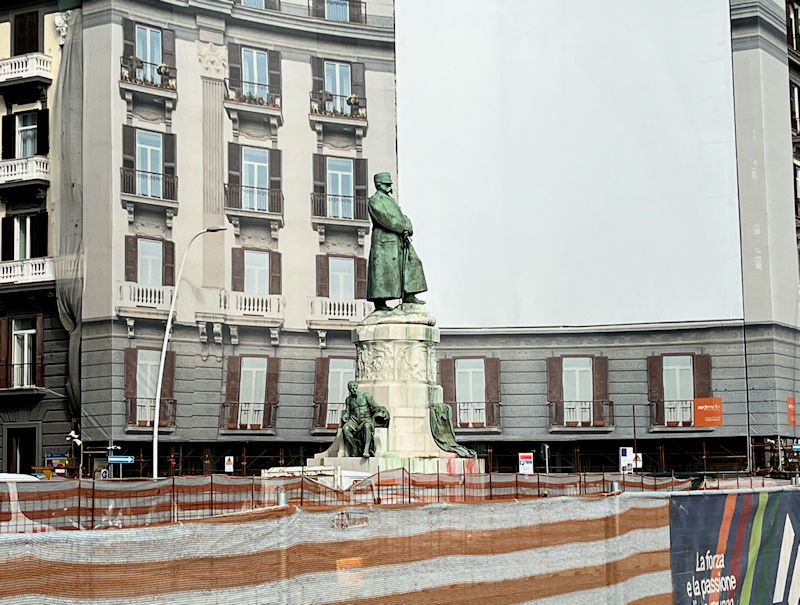
We're walking along the Via Partenope waterfront (though after the Gigante Fountain, it becomes the Via Nazario Sauro, after a World War I naval hero), and that's a less than flattering statue of Umberto I, King of Italy r.1878-1900, very well hated by the liberal elements and assassinated by an Italian-American anarchist named Gaetano Bresci (from New Jersey).
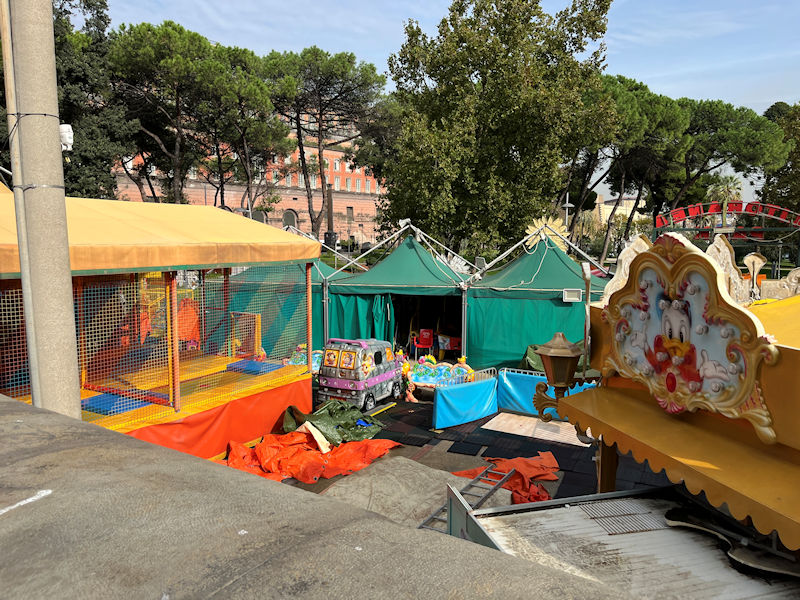
A Luna Park for the bambini (up to 10 years old)
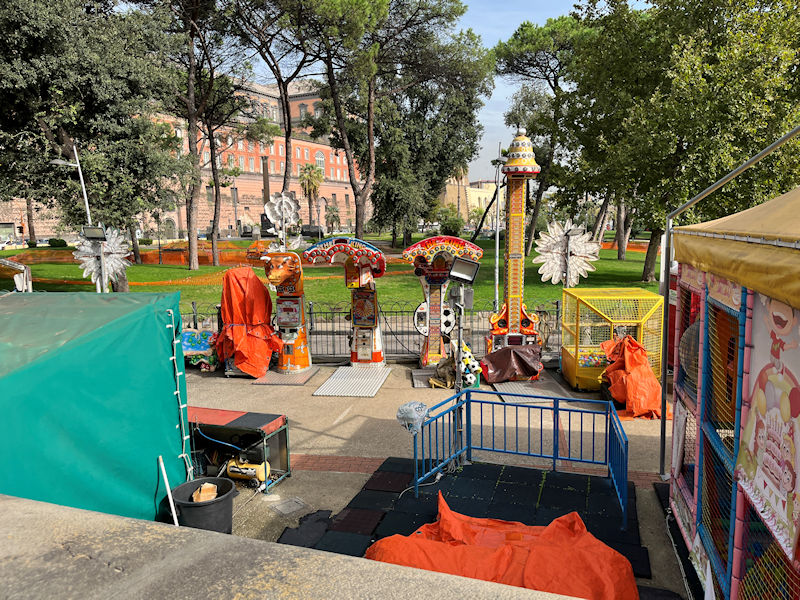
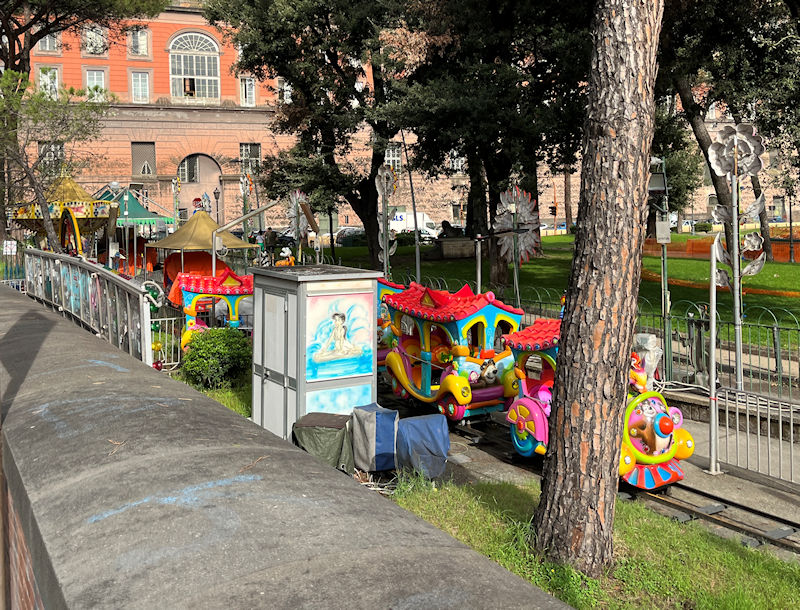
We'd never fit onto one of those things anyway.
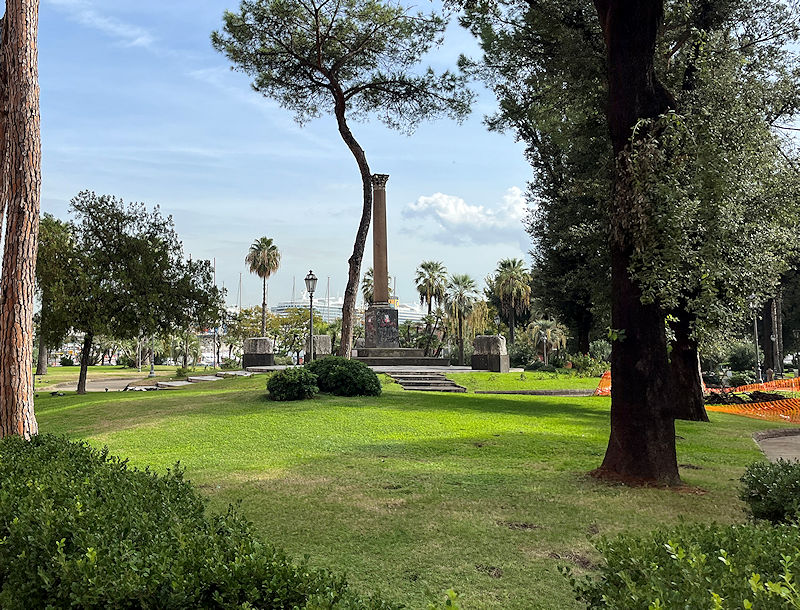
Giardini del Molosiglio ('leafy paths, sea views & a snack bar'), and . . .
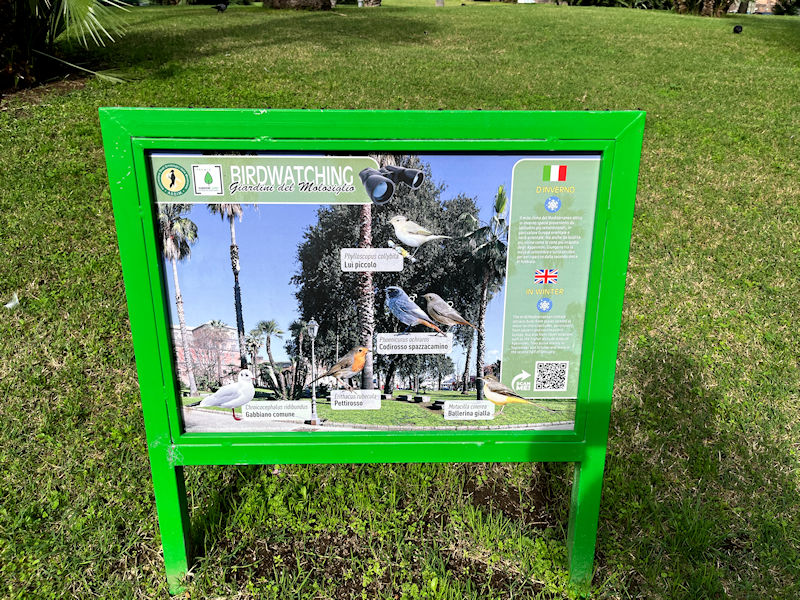
. . . good for birdwatching.
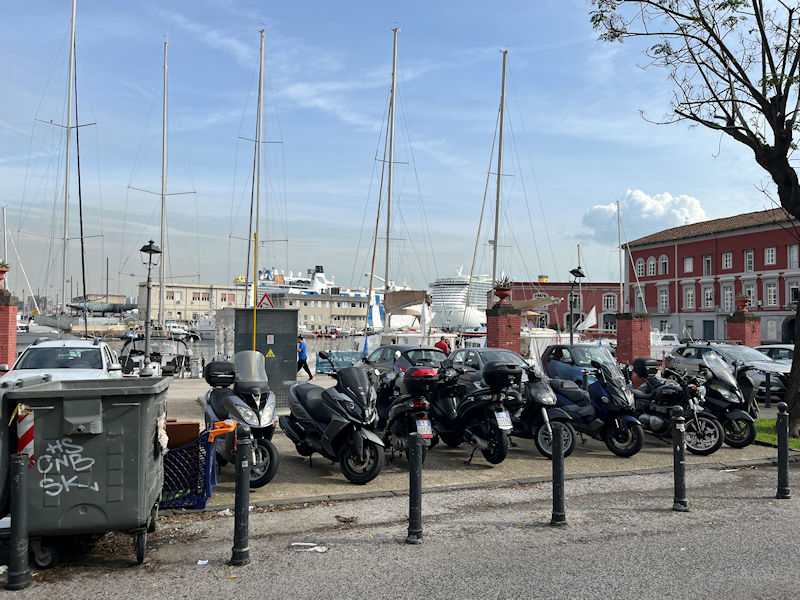
The port area

Water-borne law enforcement
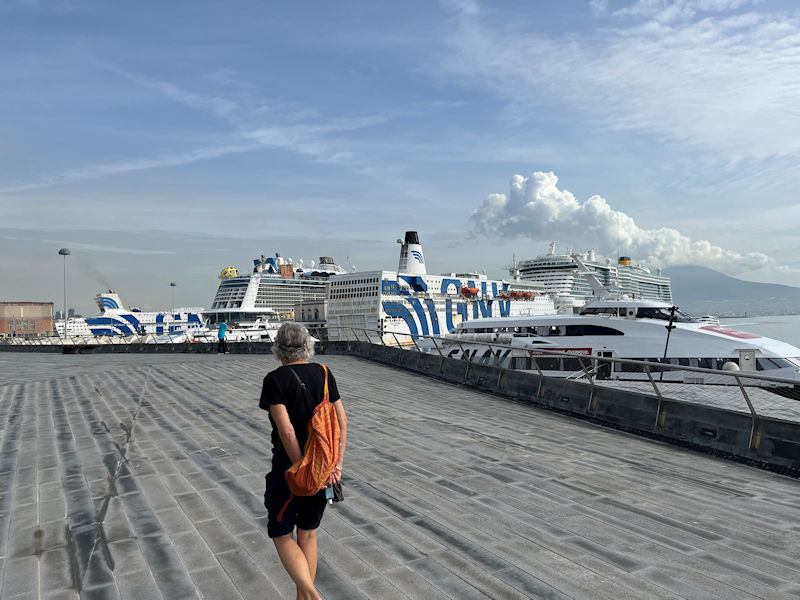
A water-borne small city
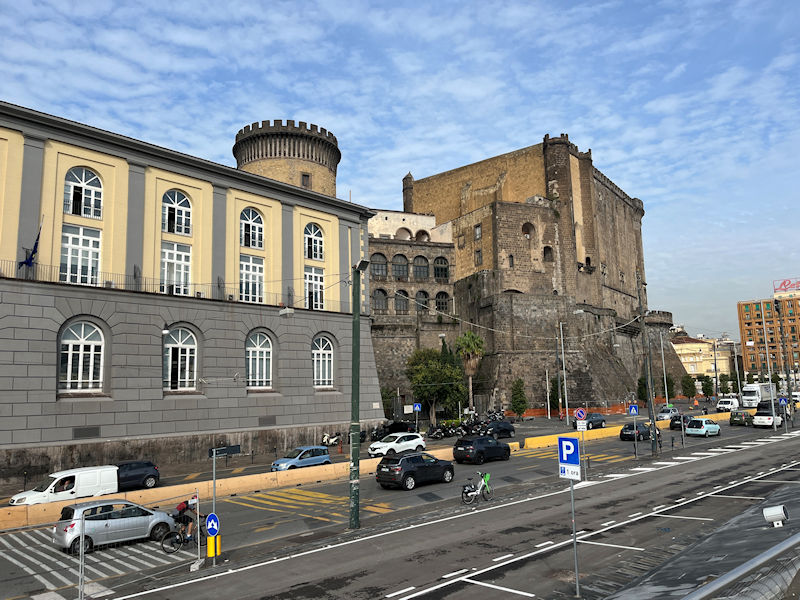
The Castel Nuovo hoves into view, or rather we're heaving into view, and we'll be there soon.
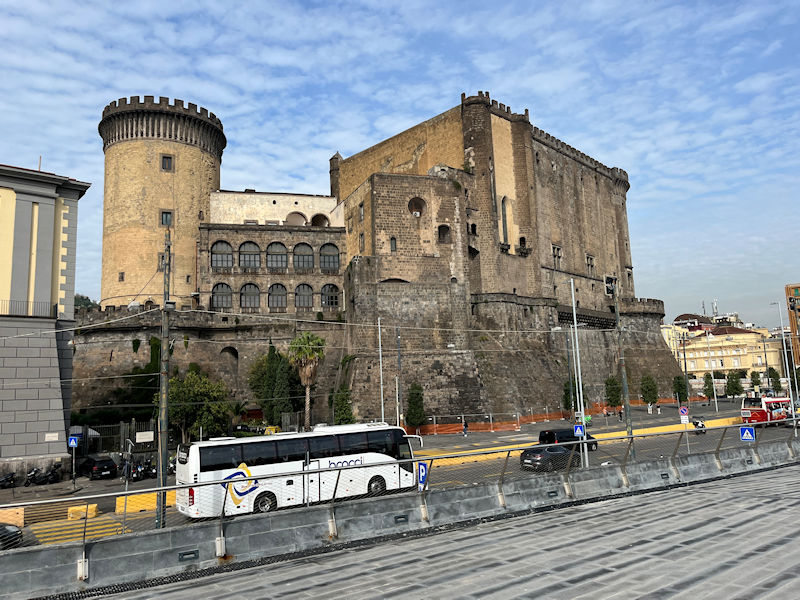
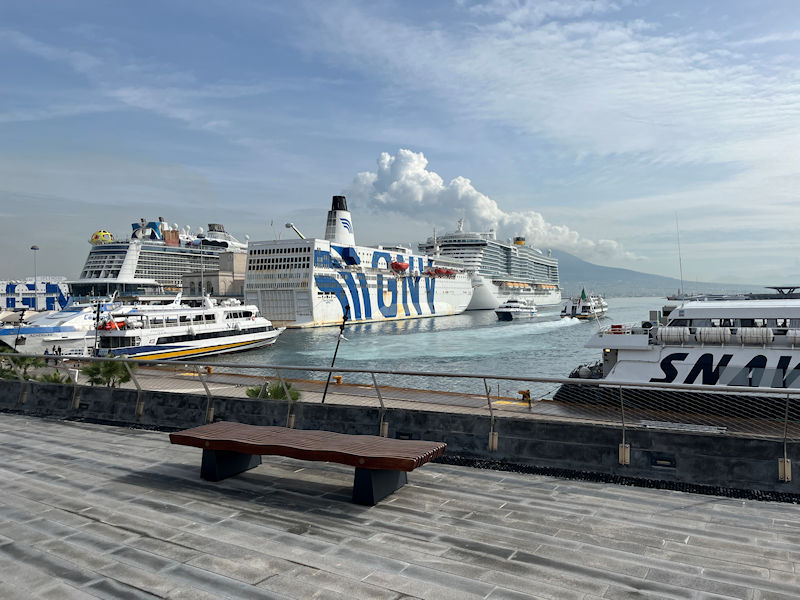
It's not easy to figure out how those things maneuvre round one another.
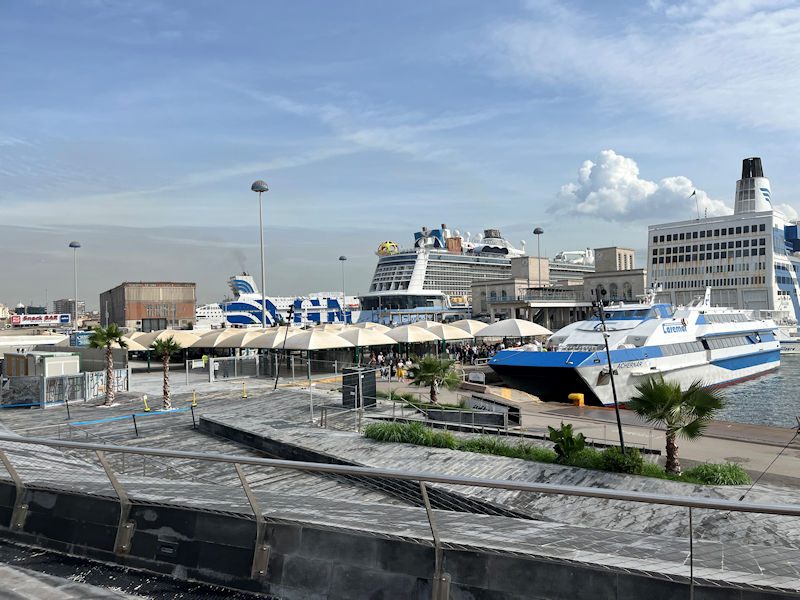
The little passenger processing tents
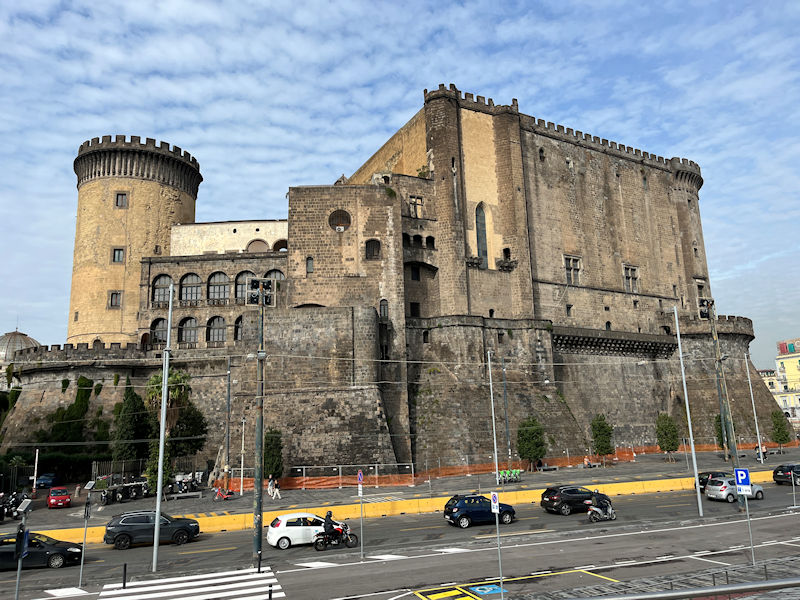
The entrance is round the other side.
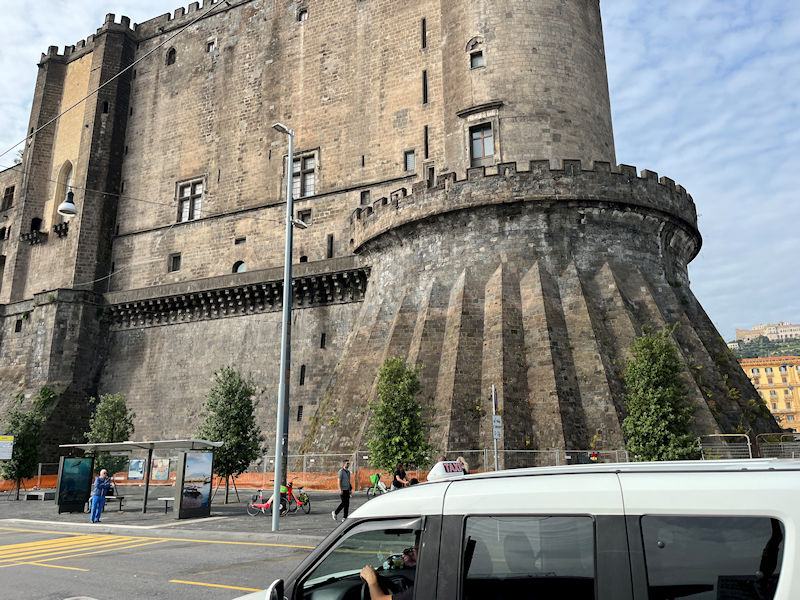
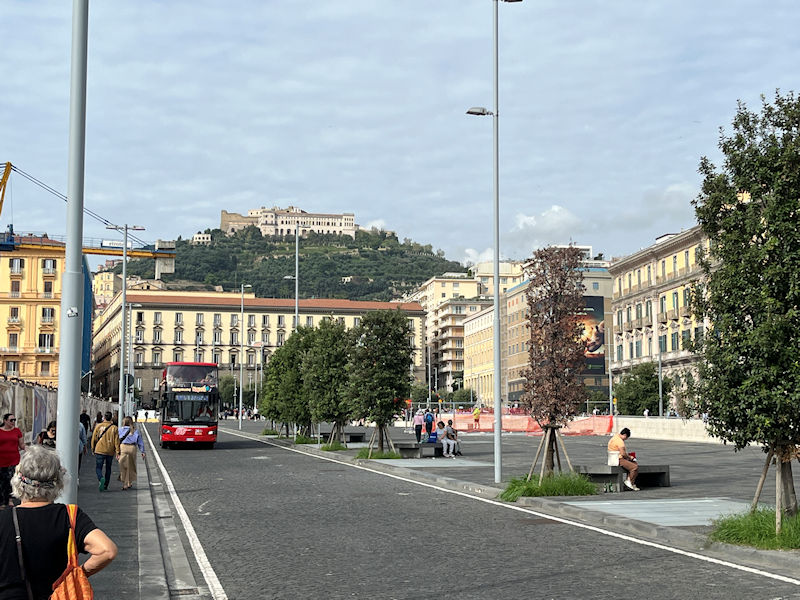
The Monastery of San Martino on the Vomero hill, with the Castel Sant'Elmo lurking behind
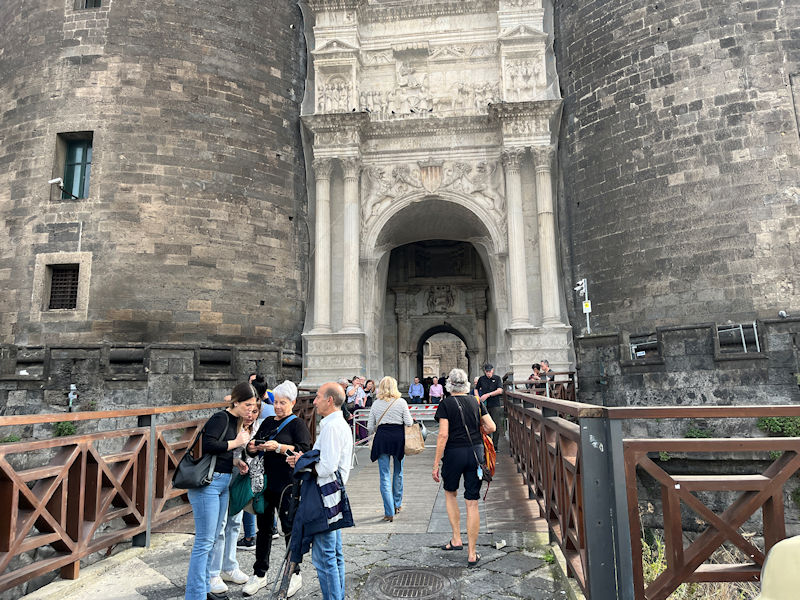
Here we go!
The red dot is us.
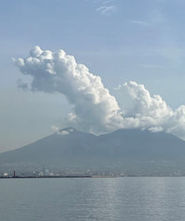 Dwight Peck's personal website
Dwight Peck's personal website


















































